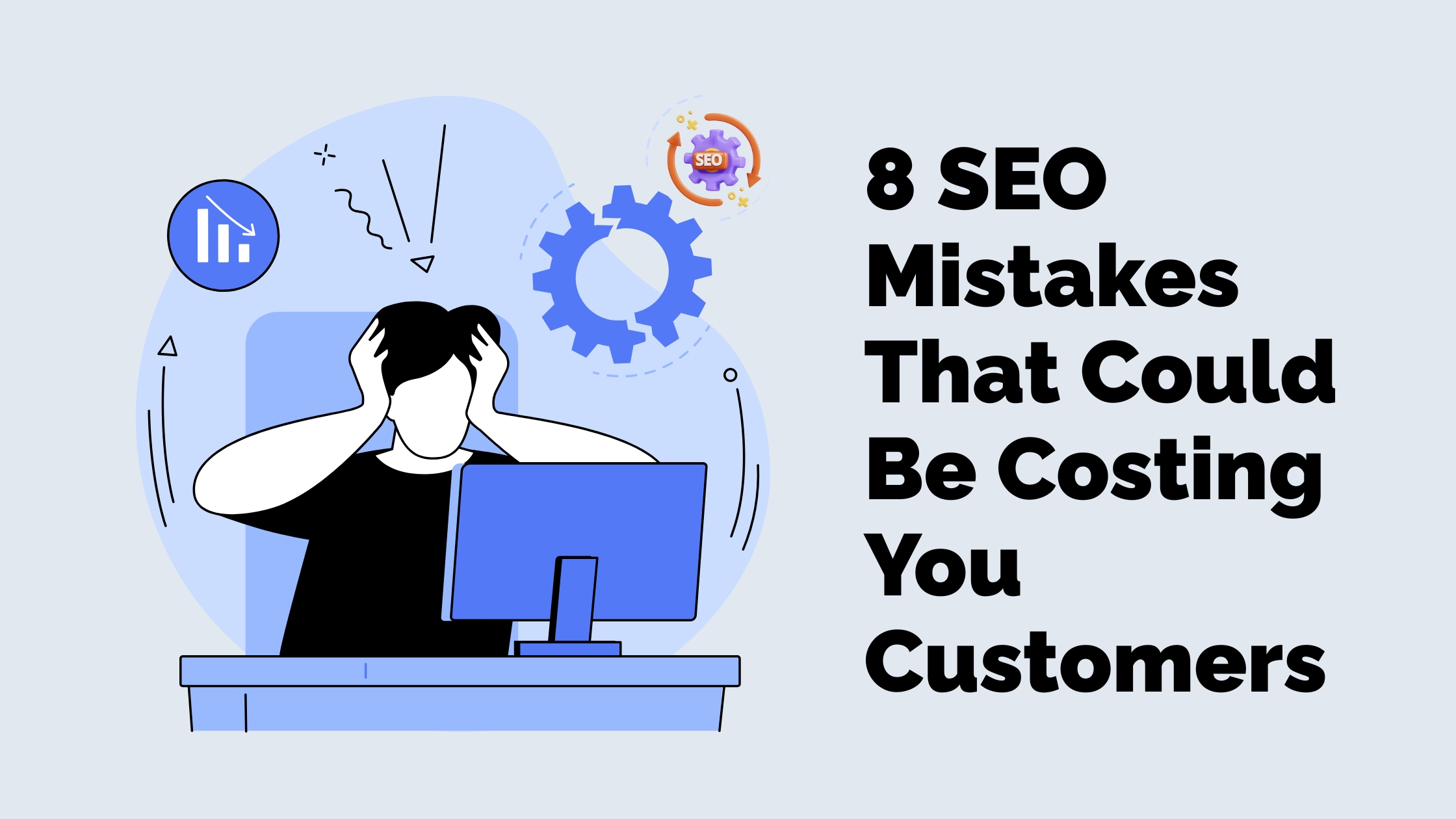If your website traffic and leads are plateauing or worse, dropping, your SEO strategy could be filled with overlooked errors. Most businesses assume SEO is a set-and-forget deal, but ongoing optimization is essential. Even a few missteps can drive potential customers straight to your competition, especially in competitive niches like local businesses, ecommerce, and service providers.
1. Ignoring Local SEO Optimization
For businesses targeting specific cities or regions, failing to optimise for local SEO is a serious setback. Without accurate Google Business Profile listings, location keywords, and localized content, your business won’t appear in “near me” searches. Customers tend to pick from the top local results. If local citations are inconsistent or reviews are lacking, your visibility drops sometimes without you even realizing it.
2. Overlooking Mobile Optimization
More than half of all searches happen on mobile devices. If your site loads slowly, displays awkwardly, or is difficult to use on a phone, visitors won’t hesitate to bounce. Google now prioritizes mobile-first indexing, so poor mobile performance means weaker rankings and lost sales opportunities for all types of businesses, including e-commerce stores.
3. Thin or Duplicate Content
Google favors unique, useful content. Repetitive blog posts, lightly rewritten ecommerce descriptions, or duplicate service pages all dilute your authority and can trigger search penalties. High-value content answers user queries with clarity, depth, and original insights. Mimicking competitors’ sites or auto-generating content is risky and rarely sustainable for long-term SEO gains.
4. Ignoring Technical SEO
SEO isn’t just about keywords and backlinks. If your website has broken links, poor URL structure, slow-loading pages, or missing meta tags, it creates crawl and index problems. These technical flaws confuse search engines and frustrate users, hurting organic visibility. Routine site audits and fixes are musts for companies serious about sustainable SEO, especially for larger e-commerce sites.
5. Not Leveraging E-commerce SEO Best Practices
E-commerce SEO requires more than general optimization. Each product and category page should target unique, intent-focused keywords. Skipping schema markup, failing to optimize for site speed, or using duplicate manufacturer descriptions can cause your product listings to slip behind the competition. Rich snippets, review stars, and FAQ schemas directly influence click-through rates in SERPs.
6. Underestimating Quality Backlink Building
Backlinks from reputable sources are still powerful ranking factors. Relying on spammy directories, link farms, or outdated classified ad strategies can get your site penalized. Successful SEO strategies focus on earning genuine mentions from trusted websites within your niche. For local and e-commerce brands, this includes industry blogs, local directories, and trusted business partnerships.
7. Poor Keyword Targeting
Chasing generic keywords leads to wasted resources and low conversion rates. Long-tail, local, and intent-based keywords connect you with high-potential customers ready to act. Overstuffing pages with keywords or skipping content optimization altogether both hurt visibility. Effective SEO means striking a balance between relevance, search volume, and competition.
8. Neglecting Analytics and Ongoing Optimization
SEO is not a one-time task. Failing to monitor analytics, conversions, or heatmaps means you’re missing out on valuable data. Regular reviews reveal which pages bring the most leads—and which underperform. Without ongoing adjustments, even well-optimized sites can slip in rankings as algorithms shift and competitors update their strategies.
Detailed SEO Mistake Prevention Checklist
- Optimized Google Business Profile and consistent NAP citations for local SEO.
- Mobile-first website design and performance testing.
- Unique, in-depth content for every main page and blog post.
- Regular technical audits, fixing broken links, speed, and meta tags.
- Product and category pages optimized for unique keywords and schema for e-commerce SEO.
- Backlink strategy focused on quality, authority, and natural placements.
- Keyword research emphasizing relevance, search intent, and realistic opportunity.
- Ongoing site analytics monitoring, user behavior analysis, and iterative improvements.
Conclusion
Avoiding these common SEO mistakes will not only help your business rank higher but will also convert more visitors into loyal customers. From local and ecommerce SEO strategies to ongoing optimization, every detail matters. Take advantage of regular audits, learn from competitor strengths, and evolve your approach—that’s how successful brands stay ahead in search.
FAQs
Local SEO is the practice of optimizing your website and online presence for location-based searches. It helps businesses appear in search results when potential customers are looking for services in their area, which leads to increased foot traffic, phone calls, and qualified local leads.
Technical SEO issues such as broken links, slow page speed, or improper meta tags can prevent search engines from properly crawling and indexing your site. This reduces your website’s visibility in search results, limiting your opportunities to attract new customers and generate sales.
Unique content establishes your authority and relevance for search engines. When your site offers original, helpful information that differs from competitors, it’s more likely to attract links, rank higher, and satisfy users—ultimately leading to better engagement and conversions.
Ecommerce SEO targets product and category pages with specific keywords and structured data, like schema markup, for better visibility in shopping results. It addresses unique challenges such as duplicate content and focuses on conversion optimization to increase sales.
Regularly monitoring SEO performance offers insights into what’s working and what needs improvement. By tracking analytics, you can adapt strategies based on actual results, stay ahead of competitors, and ensure continued growth in rankings and conversions.

